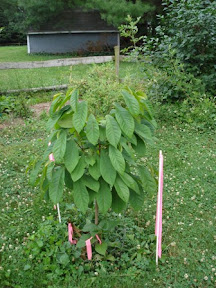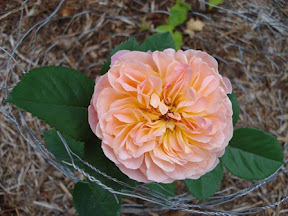My herbs are in a bed that wraps around the screen porch. Conditions range from Hot and dry at one end to shady and moister as it disappears under the apple tree and around the far side of the porch. I do a lot of cooking and it's very handy to step out of the kitchen and into the herb garden. The lavender is in full bloom, smells wonderful and is visited by many bees. I cut a handful for flowers and added them to a plastic tub full of sugar. I have a recipe for lavender flavored shortbread that I want to try. Tea party anyone?

In the sunny part I have thyme, sage, rosemary, marjoram, oregano, several cultivars of English lavender.

In the shadier part I have lemon balm and then mint and woodruff slugging it out in one bed.
Basil, tarragon and parsley are in the transition zone from sun to shade.
My cats will lounge around in the herbs and may come inside smelling strongly of mint or rosemary. I need to put some catnip out there for them but it's hard to get it established. Cats have no ability to delay gratification and eat the stuff as soon as it sprouts.










